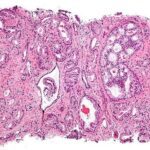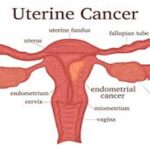Caption: A special issue of Preventive Medicine outlines the course of action needed to eliminate HPV–related cancers, starting with cervical cancer. Vaccine, screening and treatment are the three elements needed concurrently to succeed (Credit: Moffitt Cancer Center).
More than 100 scientists provide guidance towards meeting WHO global strategy of eliminating cervical cancer by 2030
India
healthysoch
Amsterdam/ New Delhi, March 4, 2021 :
Cervical cancer is a serious global health threat which kills more than 300,000 women every year. It’s a disease that disproportionately affects women in low- and middle-income countries in equatorial Africa, Latin America and Southeast Asia, yet it is a preventable disease and decades of research have produced the tools needed to eliminate it.
Recognizing this urgent public health issue, the editorial team of Preventive Medicine, led by Editor-in-Chief Dr. Eduardo Franco, Director, Division of Cancer Epidemiology and Chair, Gerald Bronfman Department of Oncology at McGill University, is publishing a special issue titled “From Science to Action to Impact: Eliminating Cervical Cancer,” which outlines the required courses of action to eliminate cervical cancer.
The journal’s publication coincides with International HPV Awareness Day on March 4 and is dedicated to the more than half a million women who are struck by cervical cancer every year. Its publication follows the official launch last November of the World Health Organization (WHO) strategy to accelerate the elimination of cervical cancer. The strategy outlines targets for all countries to achieve by the year 2030: 90 percent human papillomavirus (HPV) vaccination coverage to prevent the infections that cause cervical cancer; 70 percent screening coverage; and 90 percent access to treatment for women identified with cervical disease.
Dr. Anna Giuliano and Dr. Linda Niccolai, two giants in the field of cervical cancer prevention research, served as guest editors for the issue. Dr. Giuliano, Director of the Center for Immunization and Infection Research in Cancer and Professor in the Department of Cancer Epidemiology at the Moffitt Cancer Center, and Dr. Niccolai, Professor of Epidemiology, Yale School of Public Health, Director of the Connecticut Emerging Infections Program, and member of Yale Cancer Center, assembled an outstanding group of international scientists and practitioners who contributed papers on basic science, clinical medicine, public health practice and mathematical modeling, all focused on the targeted action needed in each of these realms to achieve cervical cancer elimination.
“In the history of medicine, we never dared to conjugate the verb ‘eliminate’ with respect to cancer,” says Dr. Franco. “The toll in human suffering for a disease that is preventable makes the elimination of cervical cancer a moral goal that we have an ethical obligation to achieve. HPV vaccination can prevent the vast majority of cervical cancers and molecular HPV testing is a great technology to detect the remaining precancerous lesions that are not prevented. These two preventive strategies must be deployed on a global scale.”
In their editorial, Drs. Giuliano and Niccolai emphasize that in addition to public health and clinical resources for research and health care, there is a critical need for government officials to take a strong stand. “We have all the tools we need for cervical cancer elimination: vaccination, screening and treatment, for both primary and secondary prevention,” says Dr. Niccolai. “What we need now is the commitment of political, medical and public health officials to make this happen.”
Dr. Giuliano further explains, “The articles in this issue were selected to encapsulate the knowledge we have, and effort needed to reach global cervical cancer elimination. Our intent was to inspire action globally among scientists, health care providers, policy leaders and communities to accelerate progress toward this attainable goal.”
The COVID-19 pandemic has created both challenges and opportunities regarding global efforts to conduct HPV screening and vaccination. “The pandemic has taught us how to be agile and creative, and how to work toward health promotion under the most difficult of circumstances. It has forced us to reimagine how we deliver health care including preventive services,” says Dr. Niccolai. “It has also highlighted for the public the powerful potential of vaccines to protect our health.”
“We are delighted to place Preventive Medicine, a respected journal that has an international readership in public health, to the service of this great cause,” says Dr. Franco, who has served as Editor-in Chief since 2013. “Drs. Giuliano and Niccolai have done an outstanding job. This special issue of the journal presents a technically feasible and realistic roadmap for facing the great challenge of eliminating cervical cancer.”
healthysoch







